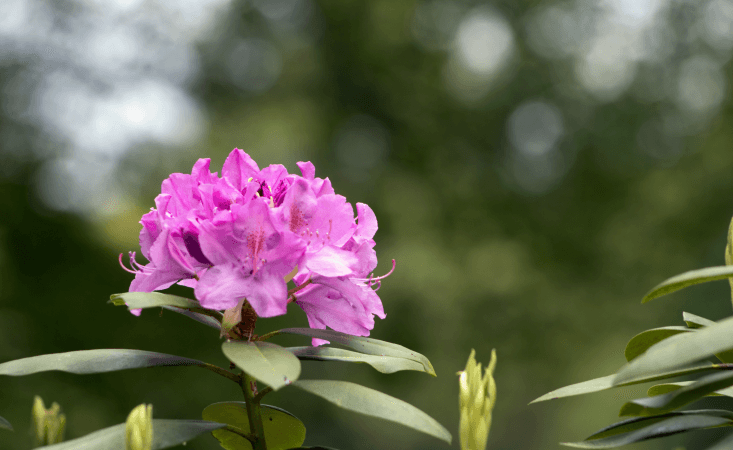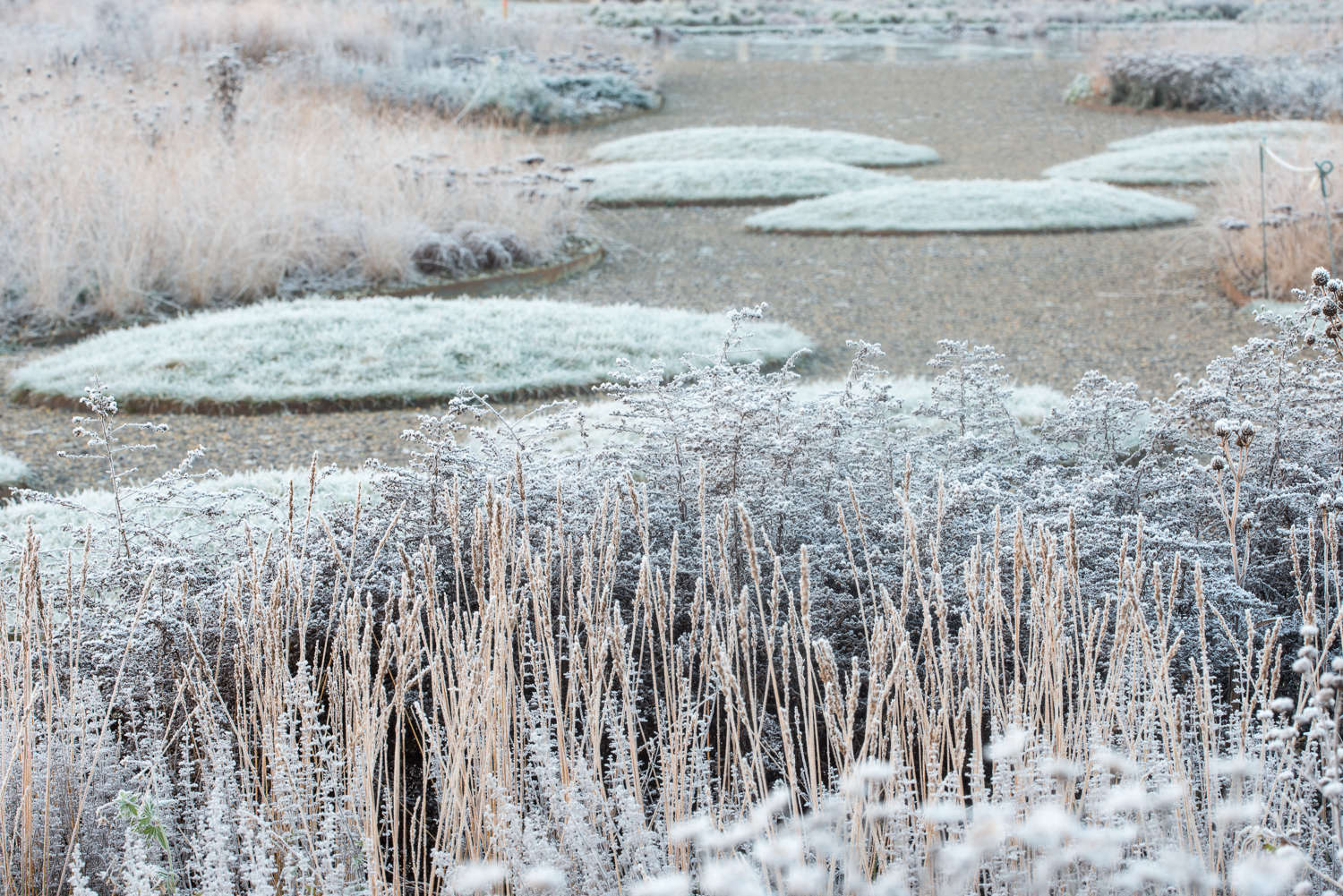Rhododendron, Rhododendron: “Rose Tree”
One of the many things I have learned as a volunteer working with the tireless organizers of the Brooklyn Botanic Garden plant sale is that shade is the norm in the backyards of brownstone neighborhoods. That fact underlies the choices made by landscape designer Joan McDonald of Gardens by Joan, who is in charge of ordering the thousands of trees, shrubs, and perennials for the organization’s annual sale. For gardeners with shady backyards, McDonald orders dazzling blooming shrubs such as mahonia, camellia, and the stalwart of the woodland landscape: rhododendron.

Many gardeners prefer showy sun lovers such as poppies, peonies, and roses, but those plants often don’t thrive in small plots that are surrounded by big trees, tall fences, and shadow-casting buildings.
So McDonald, a practical woman, ups the number of shade lovers. More Brunnera, less Gaillardia. More hellebores, less salvia. And while shade plants are often considered to be more subdued than sun plants, that is not always the case.

Rhododendrons and their close relatives, azaleas, have been treasured by generations of gardeners for their spectacular but short-lived flowers. In fact the name rhododendron comes from Greek words that mean “rose tree.” Modern gardeners seeking plants that offer four-season interest sometimes bypass them as not sufficiently appealing except when they are in bloom. However, as fans of these plants point out, with some effort and judicious research, rhododendron varieties can be found that will provide important enhancements to the garden well beyond their blooms.

For more about azaleas, which can be either deciduous or evergreen, see Azaleas 101: A Field Guide to Planting, Care & Design.
Other rhododendrons are usually evergreen and so will provide color in winter. With somewhere around 900 to 1,000 species, this genus comes in all sizes and shapes from creeping ground covers to giants that tower 80 feet or more. They can be massed in formidable hedges and screens. Varieties can be found with leaves of many shapes, colors, and sizes, and they can be mixed in borders to provide interesting textural backgrounds for perennials and annuals. New growth on some rhododendrons is striking and colorful and some varieties have peeling bark and leathery leaves with furry or silvery undersides. Indeed the claim on the website of the American Rhododendron Society that “you can find a rhododendron to fit any specific garden need” does not appear to be an exaggeration.

Experts caution that rhododendrons are quite particular about their environment and can be susceptible to various insect attacks and diseases such as powdery mildew and rust if their cultural needs are not adequately met. Before you add a rhododendron to your garden, make sure you can provide the conditions that will ensure a healthy plant.

Cheat Sheet
- Select plants that are bushy, with at least four main branches at the base.
- To make sure that you get the flower colors you want, buy rhododendrons when they are in bloom.
- Plant in a sheltered area away from direct sun and wind, both of which can burn delicate leaves.
- Avoid planting in deep shade. Rhododendrons need some sunlight to flower.
- Deadheading spent flowers is not necessary but is easily done and is aesthetically pleasing to many gardeners.

Keep It Alive
- Rhododendrons do not like extreme temperatures and grow best in USDA zones 5 to 8.
- Plant in acidic soil, moist but well-draining.
- Rhododendrons like plenty of humidity and should be well-watered but not saturated.
- Except in the case of damaged stems or branches, rhododendrons do not normally need to be pruned.
- Rhododendrons have shallow root systems and should be mulched to prevent the roots from drying out.

Rhododendrons and azaleas have similar cultural requirements and are often planted together. Experts differ in their theories about exactly what makes these plants different from each other. When buying azaleas, you may notice that their official Latin names contain the word “rhododendron.” For instance the orange-flowered native flame azalea has the Latin name Rhododendron calendulaceum, which reflects the fact that although azaleas once belonged to their own totally separate genus, scientists later folded them into the Rhododendron genus. To put it another way, all azaleas are rhododendrons but not all rhododendrons are azaleas. Generally speaking, azalea plants tend to be smaller than rhododendrons and have smaller leaves. Unlike most rhododendrons, which are evergreen, many azaleas are deciduous. Azalea flowers usually have five stamens (pollen producing male flower parts) while rhododendrons have 10.
To add to the confusion, there is also a type of rhododendron known as the vireya. These are tropical plants that have similar cultivation requirements to orchids. Natives of South East Asia, vireyas often grow in cloud forests as epiphytes high in trees. They require a frost-free environment and are often grown in greenhouses or as houseplants. Although vireyas are not nearly as well-known as rhododendrons and azaleas, it is estimated that as many as one-third of all rhododendron species are vireyas.
Read more design and care tips at Rhododendrons 101: A Field Guide and get ideas on how to plant, grow, and care for more of our favorite shrubs and hedges with our Shrubs: A Field Guide. To see how mature shrubs will look in your garden, read:
- Landscape Ideas: Blazing Color with Red Twig Dogwood, 5 Ways
- Azaleas 101: A Field Guide to Planting, Care & Design.
- 10 Garden Ideas to Steal from Instagrammers
- Winter Enchantment: 9 Best Witch Hazels for a Luminous Garden
- 10 Best Garden Design Ideas for 2018









Have a Question or Comment About This Post?
Join the conversation